Organization Reports > Action Plan 2020
Action Plan 2020
The Internet is for everyone.
This remains the Internet Society’s vision. Yet nearly half the people in the world remain unconnected. Those who are connected face new and growing challenges to fully realizing the Internet’s potential. Even as more people come online, it is critically important that the Internet be a platform that enables people to connect, communicate, and innovate.
We believe deeply that the Internet must be open, globally-connected, secure, and trustworthy. Globally connected means that any part of the network can communicate with any other part by using the same open standards and protocols. While no system as broad and diverse as the Internet can be completely secure, vulnerabilities and threats must be mitigated to acceptable risk levels, and design and deployment of services must follow the best practices we know. Trustworthiness requires the Internet to work in a resilient, reliable, and accountable way that consistently meets users’ expectations.
In 2020, we will continue to work towards realizing our vision by building, promoting, and defending a bigger and stronger Internet.
Most of our work plan for the coming year is organized into eight projects. The Internet Society community, including Chapters, Special Interest Groups, individual members, and Organization Members, are integral to this work. Their input has informed and shaped our plans.
Continued engagement with the Internet Society community is key to our shared success. Plans to foster this engagement are integrated into each project. Every project also depends on working with partner organizations and communities to achieve maximum effect. This year’s plan explicitly acknowledges that fact and anticipates reaching beyond those with whom we have worked before.
This document describes a plan of action for the coming year, but what matters most is the difference those actions make. Extending the steps we took in this area across 2019, we have built measurements of effectiveness for each major area of effort into our work plan for 2020, and ways to assess them. This will allow us to regularly check our progress against our plans. As a result, we will publish a report at the close of the year describing what we have accomplished.
We are energized by the opportunities and challenges that the coming year brings, and we are excited to share the journey ahead with all who believe the Internet is for everyone.
Strengthening the Internet
Security and trustworthiness are preconditions to the Internet’s use and growth. The projects below address these themes. The issues to be addressed, the approaches we expect to take to address them, and examples of specific outcomes are described for each project.
Promoting the Internet way of networking
Governments are increasingly moving towards sovereignty-based approaches to the Internet. At the same time, a winner-takes-all global economy means that a few major gatekeepers have control over Internet data and infrastructure.
Both state and market-driven centralization are risks to the decentralized Internet way of networking. Centralization encourages single points of failure and moves away from the open and voluntary set of standards and practices that have sustained the Internet as a source of innovation and economic growth. These systemic risks to the global Internet’s future, and to the Internet Society’s core vision, require a broad and sustained response.
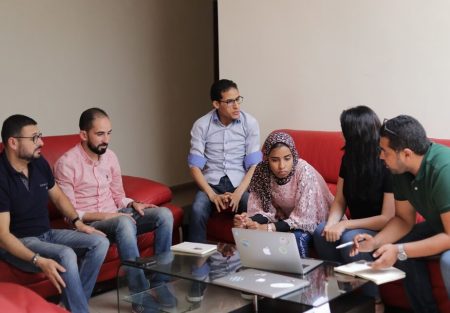
This project will articulate and promote aggressively a positive vision for the decentralized “Internet way of networking.” This encompasses the unchanging properties that describe how the Internet is built and operated, even as technologies and uses evolve. Our work will include engaging with the Internet Society community, as well as connecting and collaborating with partners and like-minded organizations around the world. We will focus on key regulatory initiatives, which present the greatest risk, and where highlighting ill-considered proposals can most clearly influence regulation and legislation in the future. Longer term, we must take a broad approach to illustrating the benefits that flow from the Internet way of networking and demonstrate the power of ensuring the Internet remains a global, general-purpose technology free from control by vested interests.
Efforts aimed at influencing deliberative, regulatory processes take time to produce results. This is especially true as we aim to reverse current trends towards centralization. In 2020, we will continue work from past years to more clearly and compellingly describe the core technical properties of the Internet. We will build a strong understanding and interest around the Internet way of networking within the Internet Society community and foster enhanced relationships with key partners and communities with whom we must work to be successful. We will test our approach with specific pieces of proposed legislation, such as the European Union Digital Services Act, and will undertake targeted outreach.
Extending encryption
Effective encryption is key to secure online communications for everything, from financial transactions to healthcare. It is a foundational component upon which a trustworthy Internet is built.
Yet, some governments see encrypted communication as a barrier to law enforcement, counter-terrorism, and public safety. Alongside increasing threats from those governments, some companies are resisting end-to-end encryption for business purposes. Together, these approaches to policies and laws, and products and practices undermine digital security and, as a consequence, erode the security and trustworthiness of the global Internet.
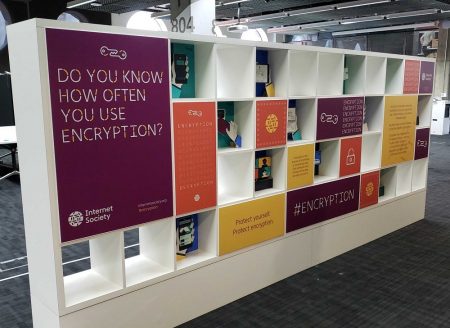
The Internet Society is in a unique position to address the threat to encrypted communications posed by both governments and the private sector. As a trusted technical voice with a deeply connected community, we will bridge the gap between policymakers and the technical community by building and activating a global advocacy movement. In particular, we will articulate a compelling narrative of the dangers of weakening encryption technologies. As specific threats to encryption arise, we will work with local partners, Special Interest Groups, Chapters, and Organization Members to mitigate them. Proactively, and working with members and partners, we will promote the implementation and use of end-to-end encryption.
By the end of 2020, we will have developed a compelling narrative that advances end-to-end encryption against threats such as exceptional access. We will have created a diverse and engaged global network of coalitions with participants aligned with our goals and efforts in this area. By 2025, our aim is that exceptional access proposals will no longer be considered a viable action for governments. Rather, leading governments will promote the use of end-to-end encryption to protect networks, communications, and data. More tangibly, we expect legal and business imperatives will mean that Internet-based services and products, such as commonly used messaging applications and Internet of Things devices, will implement and use effective end-to-end encryption, thereby increasing the security of the Internet as a whole.
Securing global routing
Ensuring Internet traffic is reliably routed around the world is a critical building block for a trustworthy, global Internet.
Based on common network operational practices in place today, the global Internet routing system does not have sufficient security controls to prevent the injection of false routing information, including impersonation of networks. The lack of these controls creates a significant vulnerability of the entire system. The result is thousands of incidents of misrouted traffic or denial of service on a global scale each year.
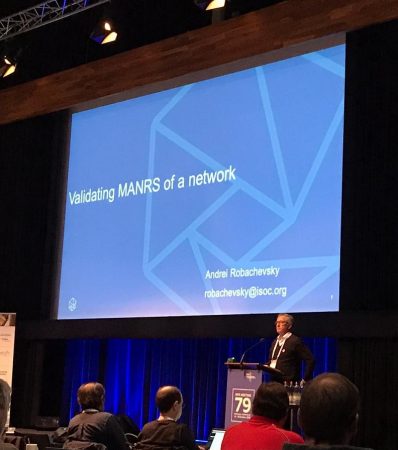
The Mutually Agreed Norms for Routing Security (MANRS) initiative, which has been fostered by the Internet Society, overcomes this collective problem by establishing a security baseline of concrete actions for network operators. These actions are supported by a growing and visible community of more than 200 networks around the world that have adopted them. The main work streams for MANRS in 2020 aim to grow the community adopting MANRS, mobilize a broader set of external communities with awareness of MANRS, improve measurement of routing security, build capacity among network engineers, and drive global adoption by conducting tailored outreach that aligns with region-specific routing communities.
Among specific outcomes in 2020, we expect MANRS membership will double and will include new kinds of organizations, such as Content Delivery Networks (CDNs). We expect the MANRS Observatory—a measurement platform that measures the impact of the participants’ actions—to become a production service, incorporating information about IXPs and improving data quality and sustainability. The MANRS Observatory will be part of the onboarding and conformance checks of participating operators. Outreach around MANRS will continue, including with new MANRS Community Ambassador and road show programs. High-level, long-term goals include MANRS being viewed as a norm in routing operations—with non-conformance seen as unacceptable—and, by 2025, for MANRS itself being a self-governed community engaged in substantive activities that drive improvements in routing security.
Increasing time security
Accurate time is essential for the trustworthiness of the Internet. Many general security mechanisms, such as the setup of encrypted channels and digital signature creation and verification, depend on accurate time information.
Yet, time information on the Internet is not securely communicated because of flawed technical protocols, a dearth of available implementations and services, and insufficient deployment and operational practices.

As part of the Internet Society’s efforts to promote a trustworthy Internet, we will work with the communities of interest, including the open source community and network equipment vendors for the implementation of the network time security mechanisms and associated tools, network operators and enterprises, which will be needed to deploy the technology, the network time community that operates network time services, and operating system developers who incorporate core functionality in all computers and are a critical driver of deployment on the global Internet.
This project will stimulate the implementation of secure network time protocols, raise awareness to promote adoption, and build capacity to decrease the cost and risk of deployment. We will work with the relevant partner organizations and communities to evolve the time security specifications, encourage multiple interoperable implementations, and support the analysis of performance and security characteristics of these implementations. We will encourage the automated deployment and successful operation of time security mechanisms and best practices. Additionally, we will measure the state of deployment of time security to track its progress.
In 2020, the first implementations of network time security will be operationally deployed, and the initial materials to help others in their deployments will be available. In addition, we will establish metrics and an associated measurement infrastructure to track future deployment. Specific metrics will be developed during 2020 to set targets for significant deployment of time security on the Internet by 2025.
Leading by example with open standards and protocols
The Internet has been built on open, freely available standards with the Web being one of the most successful and widely adopted ways to use the Internet; however, there is relatively little in terms of functioning, publicly accessible demonstration servers, environments, or documentation that shows clearly how to set up a website using a comprehensive set of the open standards, security settings, and privacy practices supported by the Internet Society.
In fact, website operators who would like to implement technologies such as DNSSEC, IPv6, and TLS 1.3, while adopting and adhering to privacy policies that embody best practices long promoted by the Internet Society, currently must gather the information about how to do these things from a wide range of sources, and assemble and deploy the various required components on their own.

This project will demonstrate and document the operational details of implementing open standards and best practices for secure web servers, and translate them into easy-to-access and use resources that allow others to do the same. It specifically targets small-to-medium sized organizations and enterprises, which make up a large portion of the web ecosystem but often do not have the resources or expertise available to easily implement the latest open protocols and best practices. Reference implementations of web servers that reflect the Internet Society’s long-time support of open standards will serve as a resource and model for others. Equally important will be repositories of guides and tutorials in a variety of formats that describe how others may undertake similar deployments. And, to further promote adoption of these approaches, this project anticipates engaging with many communities and channels related to website development.
By the end of 2020, the project will have deployed four reference servers using two major open source web servers, each with and without a Content Delivery Network (CDN), reflecting common approaches in the target audiences. Easy-to-understand resources will not only include specific items such as webpages with step-by-step tutorials, but also assets such as video screencasts showing the precise configuration steps required. These resources will include links to testing tools and environments, as well as more details on specific standards, protocols, and practices. Beyond publishing documentation on Internet Society servers, they will be promoted by publishing them on platforms such as Github, StackExchange, and other community forums as well as by outreach to specific conferences and communities who are likely to adopt them. The specifics of the reference implementations and documentation will be updated over the longer term to ensure they remain relevant and current as, for example, new versions of web server software and protocols become available.
Growing the Internet
The global Internet continues to grow around the world, but unevenly. Our efforts are aimed at not only increasing the reach and reliability of the Internet in the short term, but also ensuring the foundations for continued growth are solidly in place. A new project will bring together multiple measures of the Internet to better inform the future work and plans of the Internet Society and others to promote the growth of the global Internet.
Building Community Networks
Even though the Internet has expanded around the world faster than any previous technology, nearly half of the world’s population still lacks Internet connectivity. These unconnected communities and individuals are located on every continent. The unconnected live in rural, remote, and urban communities.
Without access to the Internet, every day without connectivity is a day of lost opportunity.
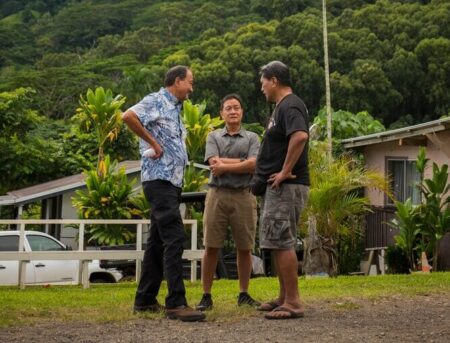
We know that Community Networks (CN) are a way to bridge the connectivity gap. The Internet Society has a long history of making a difference in this area, but to meet current connectivity challenges we will refocus and increase our efforts to support CN deployments, create capacities in communities by training local people, build new communities of interest, and work to change policies and regulations to encourage the development and deployment of Community Networks. Community collaboration is at the heart of what we do, and we will expand our efforts by reaching out to communities in need with and through our partners and current communities of interest.
In 2020, we will continue to engage with our Chapters, Organization Members, individual members, partners, and colleagues. We aim to bring on more partners at global, regional, and local levels, such as existing community networks, international financial and governmental institutions, and governmental entities, and individual experts. We will hold five regional Summits and one Global Summit to continue to build and sustain CNs and communities of practice. To track progress and improve how we do our work, we plan to better measure the level of connectivity pre- and post-network deployment, and to work with partners to identify metrics to track the impact CNs have on and within a community. Looking beyond 2020, our vision is for broad acceptance and deployment of CNs around the world, changes to government policies and data to support these changes, better project impact measurement, and a network of communities that can each sustain each other.
Fostering infrastructure and technical communities
Many countries and regions around the world lack local interoperable, open Internet infrastructure. They also lack strong local technical and operational communities to build, support, and scale that infrastructure.
Together, strong infrastructure and communities provide complementary building blocks upon which more and better Internet infrastructure can be built.

This project will focus on Internet exchange point (IXP) development and deployment, and on building the local communities, which are pillars of Internet development and growth. At a technical level, we will support the development and deployment of new IXP infrastructure, as well as the improvement of existing IXPs. We will foster and encourage the local communities and participating individuals who are building, operating, and maintaining the commercial networks, IXPs, research and education networks, and other critical parts of the Internet infrastructure. Underlying the work of this project will be a focus on measuring Internet growth and supporting evidence-based policymaking.
Our efforts will include engaging with governments and local partners, including Internet Society Chapters and Organization Members, to tackle diverse issues and obstacles. Depending on the region, the issues we may tackle include changes to policies and rules that are barriers for Internet infrastructure development. We recognize that needs vary by region, country, and local communities, and will calibrate and align with local partners to maximize impact and sustainability.
For 2020, we will support the creation of five new IXPs and strengthen 10 existing ones, particularly by developing and working with and through network operator groups (NOGs) and local Internet communities. Complementing the community and technical work, we will train hundreds of individuals in targeted geographies and communities around the world in face-to-face workshops and through our basic online network operations training course. Our broader goal for the following years is to create self-sustaining communities so that the Internet Society’s role transitions to support community-led work.
Measuring the Internet
Fundamentally, the Internet relies on independent networks connecting to one another and, all together, these form the global Internet. This is the heart of the Internet way of networking; however, in part because of its distributed nature, measuring any aspect of the Internet on a global scale is difficult. Expert researchers know where to find specialist data sources and analysis but more casually interested observers, such as policymakers or journalists, have no reliable place to find answers to questions about the current state of the Internet.
There is no single site or tool that brings together the multiple measures required to understand the Internet’s evolution and health.

This project addresses the need to have a single, easily identifiable place to go to find up-to-date data about trends that are shaping the Internet’s infrastructure and the health of the Internet way of networking itself. The project will be based on consuming and processing third-party measurement data, and will use that data to generate and present easy-to-find and -understand information. A Web-based dashboard will present these trends and contextualize indicators within an overall narrative of Internet evolution and promotion of the Internet way of networking. The information will be tailored to help a variety of stakeholders—including policymakers, researchers, and journalists—better understand the growth and evolution of the Internet along a variety of dimensions. The goal is to make available information that can be used when dealing with questions around issues such as new technology deployment and connectivity, and reliability issues in regions around the world. In addition, the information collected and organized by this project will help inform other Internet Society projects, such as Community Networks.
Internet shutdowns is another initial use case for this project. To establish the Internet Society as a key source for information about the impact of Internet shutdowns and disruptions through data, information, and insight, we plan to deliver a dashboard that will identify, track, and analyze such events. This will bring transparency to shutdowns through measurement, analysis, and reporting, and highlight the impacts both locally and to the broader Internet. This will allow us to illustrate how Internet shutdowns are a threat to the Internet way of networking, and to support a shared goal to reduce the number of Internet shutdowns.
Over the next year, this project will establish a community of interest around collecting and contributing data to support collaborative Internet measurement results. Driven by the defined use cases, an initial set of metrics, associated measurement methodologies, data sources, and partners will be developed. Based on the community and data, an initial Web-based dashboard will be developed and launched for public consumption. A coordinated communications campaign will be undertaken to promote and highlight the dashboard, including developing data-driven stories that promote the understanding of the Internet model. The long-term goal is to establish the Web-based dashboard as primary source for understanding the evolution of the Internet and the health of the Internet way of networking.
Building Our Community, Extending Our Voice
Founded by Internet pioneers, the Internet Society works with a diverse community of members, Chapters and Special Interest Groups. Strengthening engagement with our community is critical to the Internet Society’s long-term success and it is a key component of most 2020 projects.
This broad Internet Society community shares an interest and belief in our principles and mission. While together we are committed to strengthening the global Internet and expanding its reach, groups within the Internet Society encompass a wide range of views and interests.
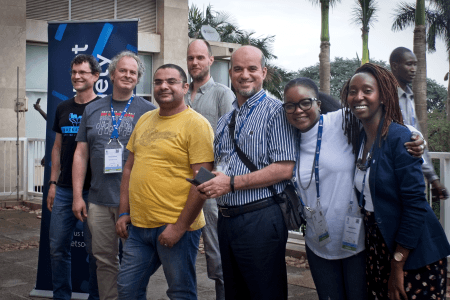
Beyond project-specific engagement, in 2020, we expect to undertake a focused, coordinated effort to understand better the community’s interests. This will allow more tailored communications and improve our ability to connect interested community members with opportunities within our 2020 projects.
Moving beyond engagement, mobilizing community members will be key to achieving shared objectives. Success in this effort will require creating clarity and communicating effectively about how Chapters, Special Interest Groups, individual members, and Organization Members can make a difference, especially how to become part of a larger movement. The next several years will be focused on building a robust support base of new community members to stand with us and amplify our voice through action. This includes digital natives who don’t know life without the Internet, and organizations whose business models rely on the Internet.
Beyond the immediate Internet Society community, we will build partnerships, foster governmental and intergovernmental relations, and pursue fundraising opportunities at global, regional, and national levels. While projects will be a primary organizing approach for these efforts, we will also work with strategic partners and organizations at global and regional levels to identify, cultivate, and preserve long-term relationships that are critical for our future work.
We will continue to undertake targeted programs to connect individuals to vibrant communities helping to build the global Internet. This includes the ISOC Policy Fellows to the Internet Engineering Task Force (IETF), and the Youth at the Internet Governance Forum (IGF). Each of these programs invests in making individual connections to new communities that would otherwise not be made. These connections provide immediate benefit to the program participants and help set the stage for long-term support of the Internet Society’s mission, vision, and projects.
Continuing to spread the word broadly about the work of the Internet Society community and its partners towards our shared vision remains a key priority for Internet Society. We must continue to speak out boldly and clearly. To do this, tailored communications activities are embedded into each project plan. And, we will develop a consistent narrative that connects all of our work to our shared vision and mission. This will ensure the Internet Society organization and community are even more influential in shaping the Internet’s future path, and in providing globally and regionally relevant voices on some of the most pressing issues facing the Internet today.
Other Activities
In addition to the projects listed above, a number of mission support activities in which the Internet Society has been engaged for an extended period will continue in 2020.
Internet Hall of Fame
The Internet Hall of Fame is a global recognition program started in 2012 by the Internet Society. It honors individuals who have contributed significantly to the Internet’s inception, evolution, and global growth. The Internet Hall of Fame recognizes the visionaries and pioneers responsible for significant improvements in Internet connectivity, key technical contributions, and advancements that promoted the Internet’s use. In its fifth year, this program has gained recognition within the Internet community and beyond. It fills a void by honoring some of the world’s most influential engineers, evangelists, and entrepreneurs.
In addition, the Internet Hall of Fame strives to inspire new generations of Internet leaders. It reinforces and promotes the attitudes and shared values that created the Internet, and it serves as a resource for information about the history of the Internet, so that future generations will understand, value, and safeguard the forces and principles that made it possible. It helps those working on the Internet today remain connected to the Internet Society and its core values: promoting the open development, evolution, and use of the Internet for the benefit of all people throughout the world.
The Internet Hall of Fame induction happens every two years, and 2020 is one of the off years. At the end of 2019, the staff member principally responsible for establishing and nurturing the Hall of Fame will retire. The year 2020 will bring an opportunity to evaluate the successes of the recognition program and to ensure that it evolves in keeping with the changing nature of the population of significant contributors.
Jonathan B. Postel Service Award
For more than 20 years, the Jonathan B. Postel Service Award has recognized leaders in the development of the Internet. The award is named for Dr. Jonathan B. Postel to recognize and commemorate the extraordinary stewardship exercised by Jon over the course of a 30 year career in networking. He served as the editor of the RFC series of notes from its inception in 1969 until 1998. He also served as the ARPANET “numbers Czar” and Internet Assigned Numbers Authority over the same period of time. He was a founding member of the Internet Architecture (née Activities) Board and the first individual member of the Internet Society, where he also served as a trustee.
Network and Distributed System Security Symposium
The Internet Society provides a home for the Network and Distributed System Security Symposium (NDSS). NDSS is a top academic conference on network and systems security, with a unique open-publication policy. This conference not only attracts top researchers from around the world, but shares contributions in a way that promotes diffusion of information to industry and beyond. The Internet Society believes that a lively community of security researchers is key to the security and trustworthiness of the Internet, and therefore continues to support this important focal point for their work.
Financial Plan
Our work in 2020 is supported by a financial plan that will ensure the Internet Society remains fiscally strong and operates effectively as a charitable, not-for-profit entity. The financial plan allocates resources so the Internet Society can continue to deliver on its mission to support and promote the development of the Internet as a global technical infrastructure, a resource to enrich people’s lives, and a force for good in society. The table below provides further details of this year’s financial plan and reflects the work plan’s focus on projects.
Our overall revenues and expenses remain at a steady level compared to recent past years. With the majority of our resources coming from a contribution from the Public Interest Registry, in 2020 we will continue our work to expand our membership, grants, and other revenue. These efforts will be oriented around and aligned with the project plans and objectives. Expenditures also are organized by the eight Action Plan projects and our other mission-based projects, such as the Internet Hall of Fame and Postel Award. Organization and operating costs capture the day-to-day expenses associated with running of the organization, including costs for community and partner engagement, and global Internet Society personnel.
2020 Budget
| Summary Statement of Activities | 2020 |
|---|---|
| Unrestricted Revenues | (All amounts in US$000s) |
| Memberships, Sponsorships, & Registrations | $2,248 |
| Grants & Contributions | $2,434 |
| Public Interest Registry Contribution | $35,000 |
| Total Unrestricted Internet Society Revenues | $39,682 |
| Expenses | 2020 |
|---|---|
| Action Plan Projects | |
| Promoting the Internet way of networking | $625 |
| Extending encryption | $1,100 |
| Securing global routing | $594 |
| Increasing time security | $250 |
| Leading by example with open standards and protocols | $187 |
| Promoting Community Networks | $915 |
| Engaging technical and operational communities | $2,254 |
| Measuring the Internet | $787 |
| Action Plan Project Subtotal | $6,712 |
| Mission Support Projects | $3,519 |
| Organization & Operating Costs | $29,151 |
| Board Governance | $300 |
| Total Internet Society Expenses | $39,682 |
| Net Surplus (Deficit) Before Interest | $0 |
| Interest and Currency | $500 |
| Net Unrestricted Surplus/(Deficit) | $500 |

Conclusion
This plan organizes our attention and resources on the most important work for building, promoting, and defending a bigger and stronger Internet in the coming year. Most of our work is organized into eight projects. The plans for these projects define specific outcomes and anticipate long-range goals, while establishing a framework for assessing and understanding how we are delivering on them. Continued engagement with all parts of the Internet Society community, strengthening partnerships with those beyond our community, and ensuring we communicate clearly and boldly are integral aspects of all our work.
We remain committed to an Internet that is a force for good in the world. With more than half the people in the world connected, the potential of the Internet to foster innovation, spark learning, and transform lives is evident. As we work to ensure the rest of the world is able to connect, we must work towards the best version of the Internet we can imagine, rather than worst version we fear.
Image copyright:
© Internet Society / Nyani Quarmyne / Panos Pictures, © Internet Society / Nyani Quarmyne / Panos Pictures, © Urban Pixel Lebanon, © Internet Society / Beth Gombala, © Internet Society / Andrei Robachevsky, © Unsplash, © Unsplash,
© Internet Society / Atul Loke / Panos Pictures, © Elyse Butler, © Internet Society, © Pixabay, © Internet Society / Nyani Quarmyne / Panos Pictures, © Internet Society / Olaf Kolkman, © Chris Gregory